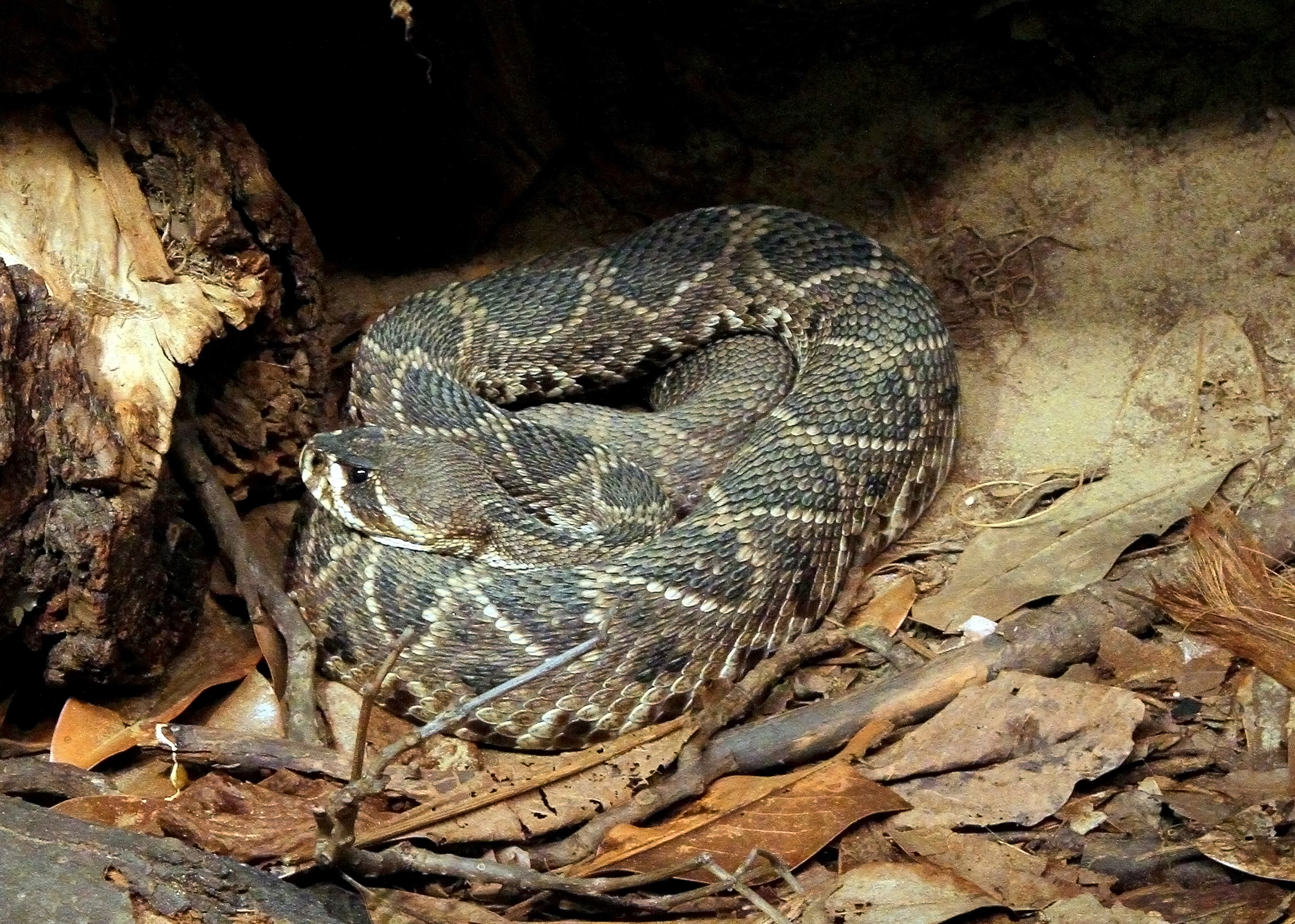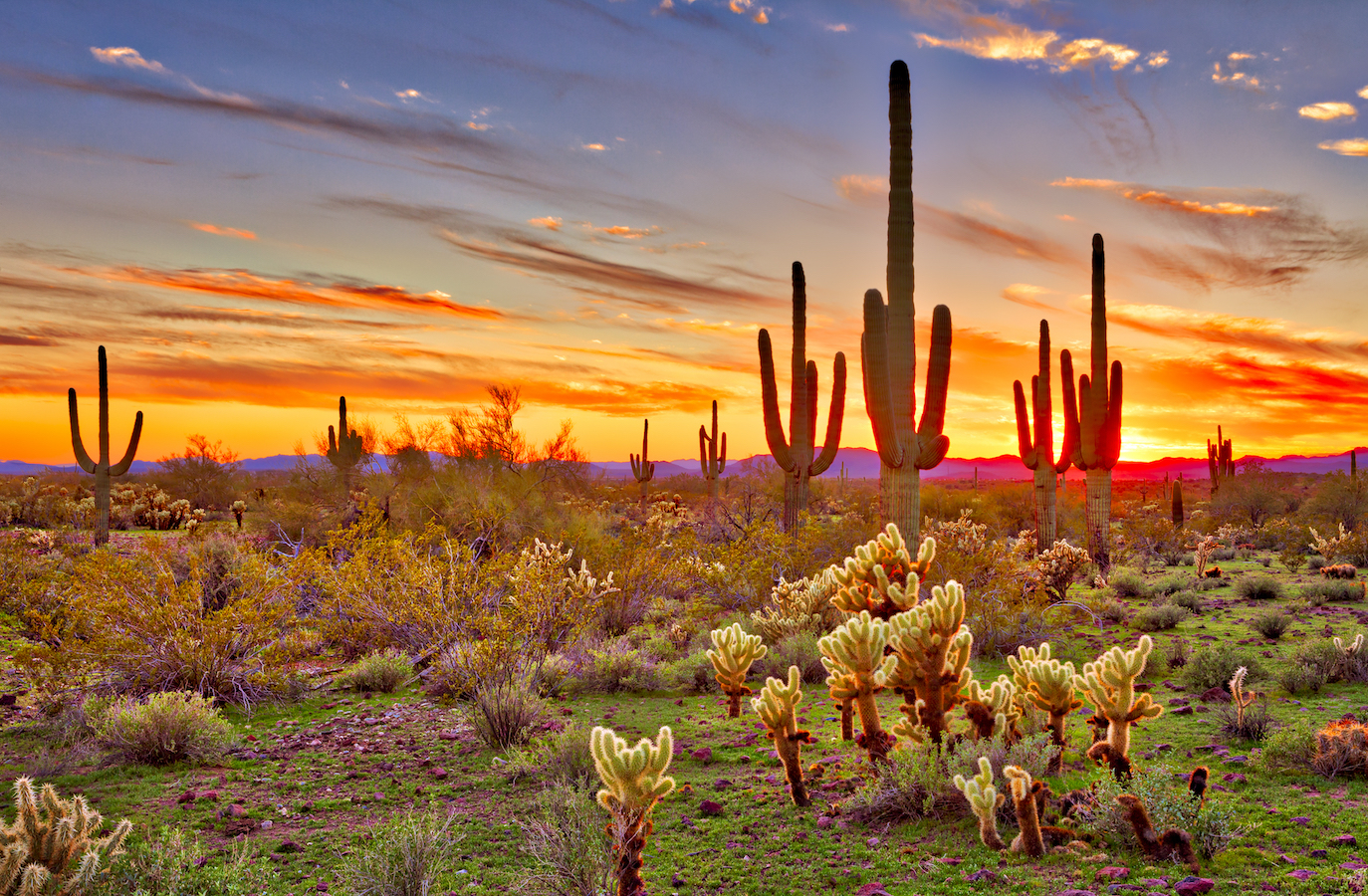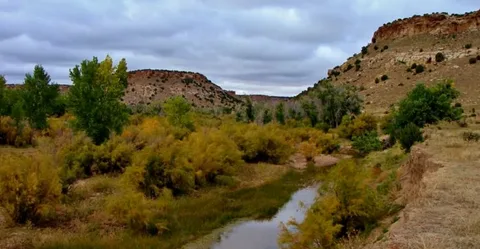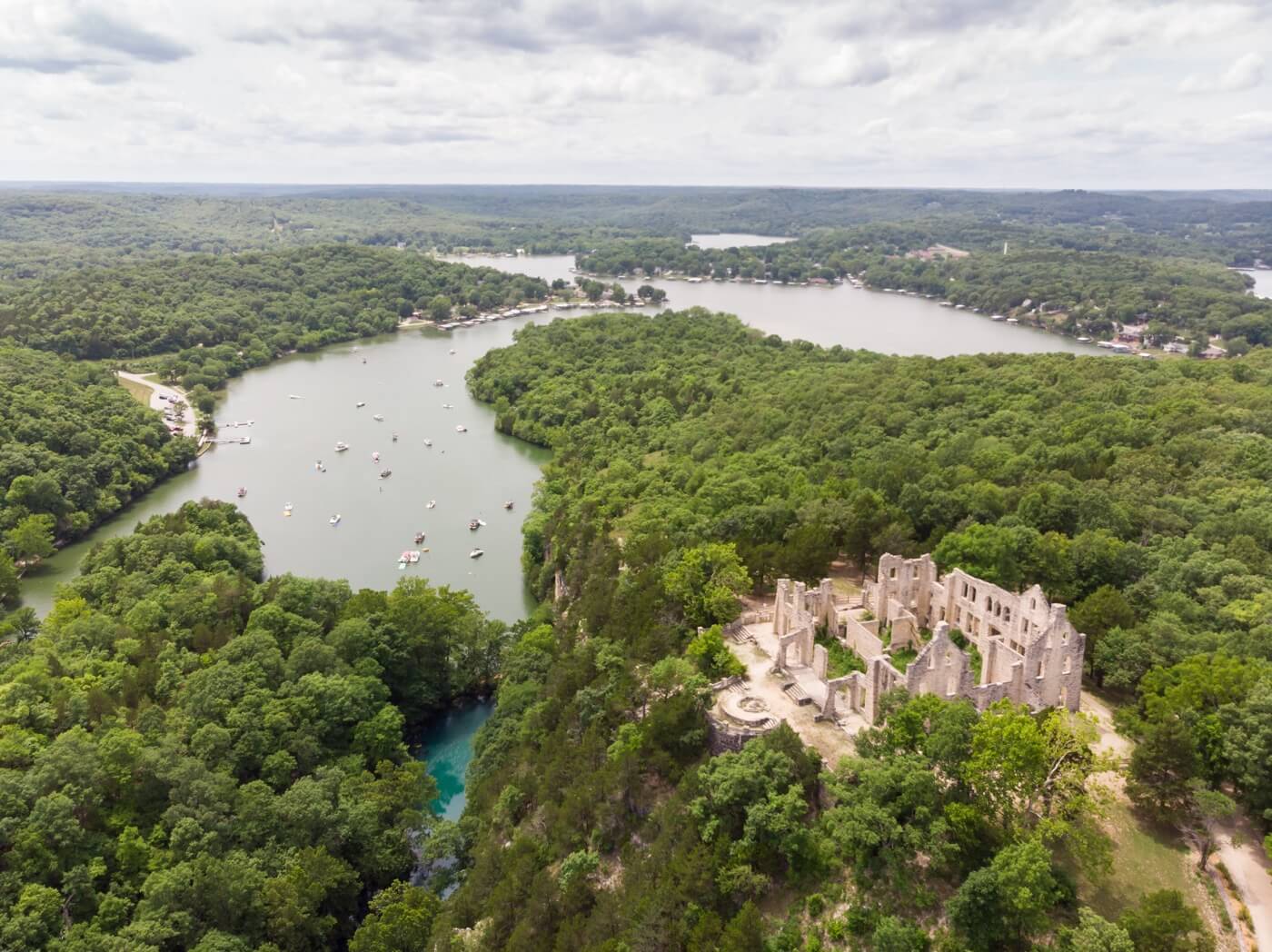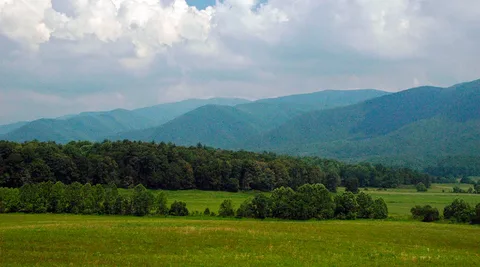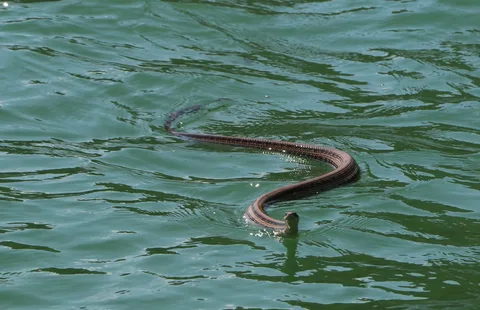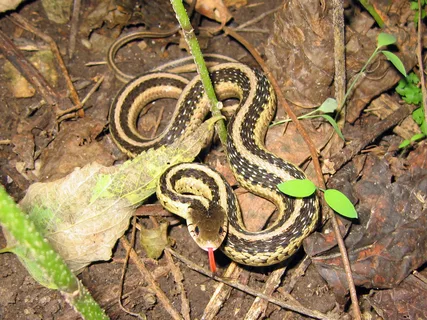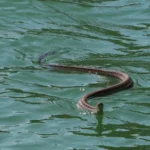South Florida
Rattlesnakes, Cottonmouths, and Coral Snakes Abound
The United States is home to a diverse range of venomous snakes, with three species in particular – rattlesnakes, cottonmouths (also known as water moccasins), and coral snakes – that are widely distributed throughout the country.
Rattlesnakes, which belong to the genus Crotalus, can be found in various parts of the US, particularly in the western and southwestern regions. They have a distinctive rattle on their tail that they use as a warning signal when threatened or sensing danger.
There are over 30 different species of rattlesnakes, including the eastern diamondback, western diamondback, and timber rattlesnake. These snakes are known for their potent venom and are responsible for most snakebite-related fatalities in North America.
Cottonmouths (Agkistrodon piscivorus), on the other hand, are found primarily in freshwater environments throughout the southeastern United States. They have a distinctive white coloration on the inside of their mouths when they feel threatened or sense danger.
Coral snakes (Micrurus fulvius) are highly venomous and found in the southeastern regions of the US. They have a unique pattern of red, yellow, and black bands that run along their body, with the distinctive rhyme “red on yellow, kill a fellow; red on black, friend of Jack” used to help identify them.
Now, let’s take a look at the 9 most snake-infested areas in the US:
- Southwest Desert Region: This region includes parts of Arizona, New Mexico, and Texas. The desert habitat provides an ideal environment for rattlesnakes, which are abundant here.
- Florida Everglades: This vast wetland is home to a high concentration of cottonmouths and other venomous snakes. The unique ecosystem of the Everglades supports a diverse range of wildlife, including alligators, birds, and fish.
- Southeastern Coastal Plain: Spanning from North Carolina to Florida, this region has a subtropical climate that makes it suitable for cottonmouths and coral snakes.
- Rocky Mountains: The western parts of Colorado, Wyoming, and Montana have an abundance of rattlesnakes due to the rocky terrain and abundant rodent populations.
- Appalachian Mountains: Stretching from Canada to Alabama, these mountains provide a habitat for timber rattlesnakes and other species of snakes.
- Canyon Country (Arizona): The Grand Canyon region is home to a wide range of snake species, including the western diamondback rattlesnake.
- Southeastern Coastal Islands: Islands like Hilton Head in South Carolina and Tybee Island near Savannah, Georgia are known for their cottonmouth populations.
- California’s Central Valley: The Central Valley of California has a diverse range of snake species due to its varied climate and geography.
- Texas Hill Country: This region has an abundance of rattlesnakes and other venomous snakes, including the western diamondback.
The Everglades and surrounding areas in southern Florida are home to an astonishing number of venomous snakes.
The Everglades, a vast and unique ecosystem spanning over 7,700 square miles, is a haven for numerous species of venomous snakes. This subtropical wetland region in southern Florida is home to an astonishing number of these slithery creatures, making it one of the most snake-infested areas in the country.
The Everglades’ diverse habitats, including sawgrass marshes, mangrove forests, and pine rocklands, provide the perfect environment for various species of snakes to thrive. Some of these venomous serpents include the Eastern Coral Snake, Micrurus fulvius, which is recognized by its distinctive color pattern and is found throughout the Everglades.
The Everglades’ neighbor, Big Cypress National Preserve, also experiences a high incidence of snake bites due to its extensive cypress swamplands. This preserve’s unique terrain provides an ideal breeding ground for various species of venomous snakes, including the Eastern Diamondback Rattlesnake, Crotalus adamanteus.
The Florida Keys, a chain of islands extending south from the Everglades, also pose a significant threat due to their vast number of venomous snake sightings. The coral reefs surrounding these islands provide an ideal environment for numerous species of marine life, including some venomous sea snakes, such as the yellow-bellied sea snake, Aipysurus laevis.
Okefenokee Swamp, located in Georgia and Florida, is another hotbed of venomous snake activity. This vast peat swamp covers over 400 square miles, creating an ideal breeding ground for various species of snakes, including the Eastern Cottonmouth, Agkistrodon piscivorus.
The southeastern United States is home to numerous other areas with high levels of venomous snake infestations. Some of these include:
- Savannah National Wildlife Refuge, located in Georgia and South Carolina, which experiences frequent sightings of the Eastern Coral Snake and the Eastern Cottonmouth.
- Waccamaw River area, stretching through North and South Carolina, where numerous species of snakes have been spotted.
- Fort Sumter National Monument in South Carolina’s Charleston Harbor, where sightings of sea snakes are not uncommon.
The presence of so many venomous snake infestations across the southeastern United States highlights the importance of respecting and appreciating these creatures. While it is crucial to exercise caution when encountering these animals, their unique biological diversity plays a vital role in maintaining the ecological balance within their habitats.
Visitors to these regions must exercise extreme care when walking through dense underbrush or approaching bodies of water. Wearing long pants and protective footwear can also aid in preventing unwanted interactions with venomous snakes.
Overall, understanding the complex relationships between humans and venomous snakes is essential for appreciating and respecting both the natural world and its inhabitants.
Central Texas
Boomslang and Copperhead Country
The United States is home to numerous species of venomous snakes, including the boomslang and copperhead. While both are known for their potent venom, they belong to different genera and habitats.
The boomslang (Dispholidus typus) is a type of African snake found primarily in sub-Saharan regions. It belongs to the Colubridae family and is not native to North America. Boomslangs are highly venomous, delivering a powerful hemotoxin through their bite that can cause hemorrhaging and respiratory distress.
The copperhead (Agkistrodon contortrix) is a venomous snake species found in eastern North America, particularly in the United States. They belong to the Viperidae family and are common inhabitants of woodsy areas with rocky outcroppings and dense vegetation.
According to various sources, including wildlife experts and snake researchers, there are specific regions throughout the US where snake populations are particularly high. These areas often feature diverse ecosystems with a mix of habitats that attract snakes and other wildlife.
Copperhead Country, a region spanning parts of eastern North America, is one such area known for its high snake population density. Within this region, certain locations stand out due to their unique geography and proximity to water sources, which can attract both humans and wildlife alike.
Other notable areas in the US with high snake populations include:
- Okefenokee Swamp (Georgia)
- Everglades National Park (Florida)
- Rocky Mountains (Colorado, Utah, Wyoming)
- Cimarron Breaks (Oklahoma)
- Santa Catalina Island (California)
In each of these regions, a combination of factors such as geography, climate, and available prey contributes to the high snake population density. While encounters with snakes can be intimidating or even deadly in some cases, it is essential to respect their territory and take necessary precautions when exploring these areas.
Central Texas is renowned for its high population of rattlesnakes, copperheads, and other species.
Central Texas is home to a diverse range of snake species, with some areas being particularly notorious for their high populations.
The region’s hot and dry climate makes it an ideal habitat for many species of venomous snakes, including the western diamondback rattlesnake, the copperhead, and the cottonmouth.
The majority of snake species in Central Texas are pit vipers, which include rattlesnakes, copperheads, and cottonmouths.
These snakes are highly adaptable and can be found in a variety of habitats, including rocky outcroppings, wooded areas, and even urban environments.
The most snake-infested areas in Central Texas include the Hill Country, which stretches from Austin to San Antonio, and the Edwards Plateau, which covers much of central Texas.
Other hotspots for snakes include the Rio Grande Valley, the Panhandle, and the Gulf Coast regions.
Certain species of snakes, such as the eastern diamondback rattlesnake and the western diamondback rattlesnake, are more commonly found in certain areas than others.
The 9 Most Snake Infested Areas In The US include:
- Arizona: Known for its large population of western diamondback rattlesnakes, copperheads, and other species.
- Florida: Home to a high concentration of venomous snakes, including the eastern coral snake, the cottonmouth, and the water moccasin.
- Texas: As mentioned earlier, Central Texas is home to many snake species, with areas like the Hill Country and Edwards Plateau being particularly notorious for their high populations.
- Louisiana: The Bayou State is a hotbed of venomous snakes, including the cottonmouth, the copperhead, and the timber rattlesnake.
- Georgia: Known for its large population of eastern diamondback rattlesnakes, copperheads, and other species.
- North Carolina: The Tar Heel State is home to a high concentration of venomous snakes, including the copperhead, the timber rattlesnake, and the cottonmouth.
- Alabama: Known for its large population of eastern diamondback rattlesnakes, copperheads, and other species.
- South Carolina: The Palmetto State is home to a high concentration of venomous snakes, including the timber rattlesnake, the copperhead, and the cottonmouth.
- Oklahoma: Known for its large population of western diamondback rattlesnakes, copperheads, and other species.
South Carolina Lowcountry
A Hotspot for Cottonmouths and Coral Snakes
The southeastern United States is home to a diverse range of venomous snakes, including the cottonmouth (Pituophis catenifer) and coral snake (Micrurus fulvius). Both species are found throughout the region, but they have distinct habitats and preferences when it comes to finding suitable spots to live.
The cottonmouth is a semi-aquatic snake that thrives in freshwater environments, such as swamps, marshes, and lakes. They are often found in areas with still or slow-moving water, where they can ambush prey and hide from predators. Some of the most common places to find cottonmouths include:
The Everglades
(Florida)
This vast wetland ecosystem is home to a large population of cottonmouths, which take advantage of its vast network of waterways and dense vegetation.
The Okefenokee Swamp
(Georgia)
This unique swamp is composed of a mix of freshwater and brackish water, creating an ideal environment for cottonmouths to live and hunt.
Lake Oconee
(Georgia)
This large lake and surrounding wetlands are home to a significant population of cottonmouths, which can be found basking in the sun on rocks and logs.
Coral snakes, on the other hand, prefer drier environments with rocky outcroppings and sandy soils. They are often found in areas with some shade, such as pine flatwoods or scrubby hammocks. Some of the most common places to find coral snakes include:
The Appalachian Mountains
(Tennessee)
This mountain range stretches through eastern Tennessee, providing a suitable habitat for coral snakes and other species that thrive in rocky outcroppings.
The Blue Ridge Parkway
(North Carolina and Virginia)
This scenic highway runs along the spine of the Appalachian Mountains, passing through areas with rocky outcroppings and sandy soils that are ideal for coral snake habitats.
Ocala National Forest
(Florida)
This national forest in central Florida has a mix of pine flatwoods, scrubby hammocks, and rocky outcroppings, creating an ideal environment for coral snakes to live and hunt.
The Gulf Coast
(Texas and Louisiana)
This region’s coastal plain, with its sandy soils and salt marshes, provides a suitable habitat for coral snakes and other species that thrive in these environments.
It’s worth noting that while both cottonmouths and coral snakes are venomous, they have distinct warning signs. Cottonmouths have a distinctive white coloration on their snout, whereas coral snakes have a distinctive pattern of red, yellow, and black bands running along their body.
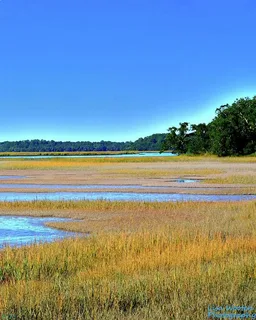
In summary, the 9 most snake-infested areas in the US are:
- The Everglades (Florida)
- The Okefenokee Swamp (Georgia)
- Lake Oconee (Georgia)
- The Appalachian Mountains (Tennessee)
- The Blue Ridge Parkway (North Carolina and Virginia)
- Ocala National Forest (Florida)
- The Gulf Coast (Texas and Louisiana)
- The Mississippi Delta (Mississippi)
- The Florida Panhandle (Florida)
Please be aware that snake habitats can change over time, and it’s always best to check with local authorities or experts for up-to-date information on snake populations in the area you plan to visit.
The marshy wetlands of the South Carolina Lowcountry are teeming with cottonmouths and coral snakes.
The South Carolina Lowcountry, a region of vast marshy wetlands, is infamous for its abundance of venomous snakes. Among these, the cottonmouth, also known as the water moccasin, is one of the most feared and respected species. With their potent hemotoxin venom and aggressive demeanor, cottonmouths are a force to be reckoned with in this unforgiving environment.
However, they share this domain with another highly venomous snake: the coral snake. The coral snake’s distinctive pattern of red, yellow, and black bands serves as both warning sign and iconic identifier for this species. Its venom, a powerful neurotoxin, is capable of causing respiratory failure if left untreated.
The 9 Most Snake-Infested Areas In The US, as per various sources, include the following regions:
- South Carolina Lowcountry: This vast expanse of marshy wetlands and mangrove forests is home to a staggering variety of snake species, including both cottonmouths and coral snakes.
- The Okefenokee Swamp in southern Georgia: Shrouded in mystery and shrouded by mist, the Okefenokee Swamp is a realm where many venomous snakes call home.
- The Everglades, Florida: This vast wetland region boasts an incredible array of wildlife, including numerous species of snakes that thrive in its subtropical climate.
- The Ridgeland region in South Carolina: A land of rolling hills and swampy valleys, this area is particularly notable for its abundance of timber rattlesnakes.
- The Texas Hill Country: Known for its dramatic vistas and rugged terrain, the Texas Hill Country is also a hotspot for venomous snake encounters.
- The Nashville Region, Tennessee: Home to a diverse range of snake species, including both copperheads and timber rattlesnakes.
- The Colorado Plateau: Spanning parts of Colorado, Utah, and Arizona, this high-desert region boasts an impressive variety of reptiles and amphibians, including venomous snakes like the western diamondback rattlesnake.
- The Gulf Coast Prairies in Texas and Louisiana: An expansive expanse of coastal wetlands and grasslands, home to numerous species of water snakes, cottonmouths, and coral snakes.
- The Olympic Peninsula, Washington: Though less known for its snake populations than some of the other areas listed here, the Olympic Peninsula still harbors several species of venomous snakes.
- In each of these regions, it is essential to exercise extreme caution and vigilance when exploring the outdoors. Be aware of your surroundings, watch for signs of snakes (such as holes or tracks in the ground), and consider consulting with local experts or guides who can help you navigate these snake-infested areas safely.
North Georgia Mountains
A Rattlesnake’s Paradise
The United States is home to a diverse range of wildlife, but none are as revered or feared as snakes. Among the many species that call America home, one stands out for its venomous fangs and deadly reputation: the rattlesnake.
Rattlesnakes have long been a symbol of danger in American folklore, and it’s easy to see why – these snakes are responsible for more human deaths than any other native snake species. With their distinctive rattle warning humans of potential danger, rattlesnakes roam freely through much of the country, striking fear into the hearts of many.
Despite this fearsome reputation, rattlesnakes play a crucial role in keeping ecosystems balanced – they prey on small rodents and other pests that could otherwise overpopulate. But for those who wish to avoid these serpentine creatures, we’ve compiled a list of the top 9 most snake-infested areas in the US.
The Arizona Desert: Spread out across southern Arizona, this arid landscape is home to not one but two species of rattlesnakes – the Western Diamondback and the Mojave Green. The heat and dryness of this environment make it an ideal breeding ground for these snakes.
Big Bend National Park, Texas: Encompassing over 800 square miles of rugged desert terrain, Big Bend is one of the most snake-infested places in the country. Western Diamondback Rattlesnakes and Sonoran Corals are just two of the many species that call this park home.
The Everglades: This vast network of mangrove forests, sawgrass marshes, and pine flatwoods is a true snake paradise. It’s estimated that over 30 different species of snakes live in or migrate through the Everglades – including numerous species of venomous water snakes.
Death Valley National Park: America’s driest national park is also one of its most snake-infested places. The hot desert landscape and lack of vegetation make it an ideal environment for Mojave Green Rattlesnakes, which can be found throughout the park.
The Grand Canyon State’s Superstition Mountains: Nestled in Arizona’s rugged wilderness are the Superstition Mountains, a haven for snakes. Home to not only Western Diamondback and Mojave Green Rattlesnakes but also numerous other species of snakes and reptiles.
Caddo Lake, Texas/Louisiana: Located on the border between these two southern states is Caddo Lake – the second-largest wetland area in the US. With over 70 different species of fish to eat, it’s no surprise that numerous types of snakes call this lake home.
The Florida Keys: Stretching south into the Caribbean, the Florida Keys are an archipelago of islands teeming with life – including many species of snakes. Home to venomous water snakes and Burmese Pythons (which have been spotted in recent years), these islands pose a snake threat unlike anywhere else in the country.
Hawaii’s Oahu: Often thought of as a tropical paradise, Hawaii is indeed home to a wide variety of wildlife – including numerous species of venomous snakes. Home to the venomous Hawaiian Boa and Brown Water Snake (neither of which are typically deadly but can cause pain), this island poses a snake threat unlike anywhere else in the US.
The Appalachian Mountains: Stretching across eastern North America, these mountains are home to an incredible range of wildlife – including numerous species of snakes. The rugged terrain and rich biodiversity make it difficult for humans to track down all the snake populations within this region.
The rugged terrain and abundant wildlife of northern Georgia create a perfect environment for rattlesnakes to thrive.
The southern United States is home to the highest diversity of snakes, with over 100 species found across the region. Northern Georgia’s unique combination of rugged terrain and abundant wildlife creates a perfect environment for rattlesnakes to thrive.
Northern Georgia’s landscape features rolling hills, dense forests, rocky outcroppings, and numerous streams and rivers. These diverse habitats provide an ideal setting for snakes to hunt, hide, and reproduce, with many species of snakes able to adapt to a wide range of environments within this region.
One area that is often cited as one of the most snake-infested in northern Georgia is the Chattahoochee National Forest. This forest covers over 750 square miles and features an incredible array of plant and animal life, including many species of snakes such as timber rattlesnakes, copperheads, and cottonmouths.
Another area that should be avoided by hikers and campers in northern Georgia is the Cohutta Mountains. This remote region features dense forests, steep cliffs, and numerous streams, making it an ideal place for snakes to hunt and hide. In particular, timber rattlesnakes are often found in this region, particularly during the summer months when they are most active.
The Blue Ridge Scenic Railway, which runs from the town of Blue Ridge to the nearby city of McCaysville, also passes through some of the most snake-infested areas in northern Georgia. This 13-mile railway features scenic views of the surrounding mountains and forests but may also provide hikers and cyclists with a close encounter with snakes, particularly copperheads and timber rattlesnakes.
The Chattahoochee River itself is also home to many species of snakes, including alligators, which are often found in areas where freshwater flows into the river. In particular, copperheads tend to congregate near areas of human activity, such as campsites or hiking trails, in search of food or shelter.
Other regions that are known for their high snake populations include the Okefenokee Swamp and the Black Warrior River, both located in southern Georgia. The Okefenokee is one of the largest freshwater swamps in North America and provides a habitat for numerous species of snakes including the rare eastern indigo snake.
Finally, it’s worth noting that many species of snakes are harmless to humans but often get mistaken for venomous ones due to their appearance or behavior. In particular, garter snakes, king snakes, and rat snakes are all non-venomous species found in northern Georgia but may still cause alarm if encountered by unsuspecting hikers.
Arizona’s Sonoran Desert
A Haven for Coral Snakes and Gopher Snakes
The United States is home to many species of snakes, some of which are venomous while others are harmless. Among the most fascinating and often misunderstood snakes are coral snakes and gopher snakes. These two species have many similarities but also some key differences.
Coral snakes (Micrurus spp.) belong to the Elapidae family, a group of venomous snakes found primarily in tropical and subtropical regions. The coral snake has distinctive markings that resemble a ribbon or a ring around its body, with bands of red, yellow, and black colors. This pattern serves as a warning sign to potential predators to stay away.
Gopher snakes (Pituophis spp.), on the other hand, belong to the Colubridae family, a group of non-venomous snakes. They are often confused with coral snakes due to their similar appearances and habitats. However, gopher snakes typically have a more subdued color scheme with brown or gray scales, although some species may display yellow or red markings.
When it comes to the most snake-infested areas in the US, there are nine regions that stand out as particularly significant for both coral and gopher snake sightings:
- The Everglades in Florida
- The Great Smoky Mountains National Park on the Tennessee-North Carolina border
- The Okefenokee Swamp in Georgia and Florida
- The coastal wetlands of Louisiana
- The Ozark region in Arkansas, Missouri, and Oklahoma
- The pine flatwoods of central Florida
- The sandhills of North Carolina
- The scrub forests of southern Florida
- The mountainous regions of northern Alabama
It’s worth noting that while these areas are known for their high snake densities, it is essential to exercise caution and respect when interacting with any wild animal, including snakes.
If you plan to visit or live in one of these snake-infested areas, be sure to take necessary precautions such as wearing protective clothing, staying on marked trails, and keeping a safe distance from any snake you encounter. Additionally, it’s crucial to educate yourself about the local snake species and their habitats to avoid misidentification or accidental encounters.
The arid landscape of the Sonoran Desert is home to numerous species, including coral snakes and gopher snakes.
The Sonoran Desert is a unique and diverse ecosystem that supports a wide range of flora and fauna, including numerous species of snakes.
Despite the harsh arid conditions, the Sonoran Desert provides a suitable habitat for many snake species to thrive in this region. Among the most common species found here are coral snakes and gopher snakes, which play important roles within their ecosystems.
Coral snakes, in particular, are recognized by their distinctive color patterns, with their vibrant red, yellow, and black bands serving as a warning to potential predators of their toxic venom. These highly venomous snakes feed primarily on small mammals and birds, contributing to the balance of the desert food chain.
Gopher snakes, on the other hand, are generally harmless and actually help control rodent populations within the Sonoran Desert by feeding on them. Their habits involve basking in sunlight during the day and foraging at night, demonstrating their unique adaptations to this arid environment.
Other snake species commonly found in the Sonoran Desert include bullsnakes, king snakes, western diamondback rattlesnakes, Mojave rattlesnakes, copperheads, and southern Pacific rattlesnakes. These species demonstrate a diverse array of characteristics that enable them to survive and thrive within this extreme environment.
Here’s a list of the 9 Most Snake Infested Areas In The US:
Everglades National Park, Florida
This vast wetland ecosystem is home to numerous species of snakes, including the Burmese python and the green anaconda, which has invaded the area through human introduction.
Caddo Lake, Texas/Louisiana
This shallow lake in eastern Texas and northwestern Louisiana provides a habitat for both water and land-dwelling snakes, such as the cottonmouth, copperhead, and rattlesnake.
Okefenokee Swamp, Georgia/Florida
This vast peat bog supports a wide variety of snake species due to its unique ecosystem, including alligators, black bears, and numerous water birds.
Havasupai Canyon, Arizona
Deep in the Grand Canyon lies this remote canyon with its lush oasis environment that allows a wide range of wildlife to live here, including snakes like the western diamondback rattlesnake.
Big Bend National Park, Texas/Mexico
This park along the Rio Grande provides an isolated habitat for many snake species due to its extreme elevation and lack of human development.
Tennessee’s Cumberland Plateau
The dense forests within this plateau support various venomous snakes such as timber rattlesnakes, eastern diamondback rattlesnakes, and copperheads that inhabit these areas.
Oklahoma’s Tallgrass Prairies
This region in central Oklahoma is a remnant of the state’s original tallgrass prairie environment that was once home to native grasses, wildflowers, and numerous species of snakes such as bullsnakes and king snakes.
Louisiana’s Kisatchie National Forest
This small forest in central Louisiana is surrounded by a vast network of wetlands and swamps that attract many water-loving snake species like the cottonmouth and southern copperhead.
New Mexico’s Gila Wilderness Area
The highest peak within the state, which forms the boundary between New Mexico and Arizona, provides an isolated habitat for a variety of snake species due to its elevation and rugged terrain, including western diamondback rattlesnakes.
These areas provide unique environments that support diverse and complex ecosystems where snakes and other wildlife thrive in harmony with their natural habitats.
Northwestern California
The Redwood Region’s Secret Rattlesnake Population
The Redwood Region of Northern California is home to a unique and fascinating ecosystem, with a secret population of Western rattlesnakes that inhabit the region’s rugged terrain.
These venomous snakes are an essential part of the Redwood forest’s delicate balance, serving as both predators and prey in the complex web of life that exists within the trees’ canopies and beneath their roots.
The Western rattlesnake is a relatively small species of snake, typically growing to be around 30-40 inches (76-102 cm) in length, including its distinctive rattle at the end of its tail.
Despite their small size, these snakes are potent and venomous, capable of delivering a painful bite that can cause swelling, pain, and even paralysis if left untreated.
Interestingly, the Western rattlesnake is not typically aggressive and will only strike if it feels threatened or cornered, making them an important part of the Redwood ecosystem as both predators and prey.
The 9 most snake-infested areas in the US are:
- Southern Florida’s Everglades National Park
- Arizona’s Sonoran Desert
- California’s Mojave Desert
- Texas’s Big Bend National Park
- Oklahoma’s Wichita Mountains Wildlife Refuge
- Louisiana’s Honey Island Swamp
- Alabama’s Black Warrior River Basin
- Georgia’s Okefenokee Swamp
- South Carolina’s Congaree National Park
Each of these areas provides a unique habitat for various snake species, from venomous rattlesnakes and copperheads to harmless garter snakes and king snakes.
While the Redwood Region’s secret population of Western rattlesnakes may not be as well-known as other areas with high snake concentrations, it is an essential part of the region’s ecosystem and a fascinating topic for anyone interested in wildlife and the natural world.
Hidden among the towering redwoods lies a hidden world of rattlesnakes, often overlooked by outsiders.
The Pacific Northwest is home to a diverse range of wildlife, but among the towering redwoods lies a hidden world of rattlesnakes, often overlooked by outsiders. These venomous serpents have called this region home for centuries, and their numbers are on the rise due to climate change and habitat destruction.
The redwood forests provide an ideal environment for rattlesnakes to thrive: dense vegetation, ample food sources, and plenty of shelter from predators. The snakes are well adapted to living among the trees, and can be found basking in the sun or curled up in hidden crevices.
However, the presence of rattlesnakes in these forests has become a concern for residents and tourists alike. The venomous serpents pose a significant threat to human health, and encounters with them are on the rise due to increased recreational activity and a growing human population.
The most snake-infested areas in the US are often found in regions with high temperatures and humidity levels, such as the southern and western states. However, the Pacific Northwest is an anomaly, and its unique geography has created a perfect storm for rattlesnake populations to explode.
According to a study by the National Park Service, the following areas have been identified as having some of the highest concentrations of snakes:
- Southwest Oregon – Specifically, the Klamath-Siskiyou region has seen a significant increase in rattlesnake sightings and encounters.
- Southern California – The San Diego area is notorious for its high snake populations, particularly during the summer months.
- The Grand Canyon – This iconic national park is home to over 60 species of snakes, many of which are venomous.
- Yellowstone National Park – Despite being one of the most visited national parks in the US, Yellowstone has a reputation for having some of the highest concentrations of snakes.
- Florida Keys – The tropical climate and dense vegetation make this region an ideal habitat for many snake species.
- Northwest Texas – This region is known for its high temperatures and humidity levels, making it a hotbed for snake activity.
- New Mexico – Specifically, the southeastern part of the state has seen a surge in rattlesnake encounters due to increased recreational activity.
- Arizona – The southwestern region of Arizona is home to many species of venomous snakes, including the western diamondback rattlesnake.
- Gulf Coast Texas – This coastal region has seen an increase in snake sightings and encounters due to warmer temperatures and rising sea levels.
It’s worth noting that while these regions have high concentrations of snakes, they can be found throughout the US. It’s essential for residents and tourists alike to exercise caution when exploring wild areas and to take necessary precautions against snake bites, such as wearing protective clothing and staying on designated trails.
Oklahoma’s Panhandle
A Hub for Western Diamondback and Mojave Rattlers
The western diamondback rattlesnake (Crotalus atrox) is the largest venomous snake native to North America, with a potent neurotoxin that can cause respiratory failure, renal failure, and cardiac arrest. It’s found throughout the southwestern United States, Mexico, and parts of Central America.
The Mojave rattlesnake (Crotalus scutulatus) is a subspecies of pit viper venomous snake, recognized by its distinctive black coloration with white or yellow markings. They’re known for their potent neurotoxin, which can cause severe respiratory distress and cardiac arrest.
A hub for western diamondback and Mojave rattlers would be an area that attracts these species due to favorable climate, geography, and prey populations. Some of the most snake-infested areas in the US include:
Sonoran Desert, Arizona: This desert region is home to a high concentration of western diamondback rattlesnakes due to its vast expanses of sandy dunes, rocky outcroppings, and scrubby vegetation.
Joshua Tree National Park, California: The Mojave and Colorado Deserts converge in this park, making it an ideal habitat for both western diamondback and Mojave rattlesnakes.
Grand Canyon, Arizona: The rugged terrain and diverse ecosystems of the Grand Canyon create a snake paradise for these species.
Sedona Red Rocks, Arizona: This scenic area’s red rock formations, dry washes, and juniper forests make it an attractive spot for western diamondback rattlesnakes and Mojave rattlesnakes.
Petrified Forest National Park, Arizona/Utah: The park’s vast expanse of high desert and sandstone canyons provides a suitable habitat for these venomous snakes.
Big Bend National Park, Texas: This national park straddles the US-Mexico border, offering an ideal habitat for western diamondback rattlesnakes to migrate from Mexico and expand their range northward.
Death Valley National Park, California/Nevada: Death Valley’s scorching hot summers, dry lakes, and rocky outcroppings make it a challenging yet rewarding habitat for Mojave and western diamondback rattlesnakes.
Mojave National Preserve, California: This preserve encompasses the largest intact portion of the Mojave Desert ecosystem, providing an extensive range for Mojave and western diamondback rattlesnakes to inhabit.
Organ Pipe Cactus National Monument, Arizona/Mexico: The Sonoran Desert’s unique blend of sandy dunes, rocky outcroppings, and scrubby vegetation creates a snake-friendly habitat for both Mojave and western diamondback rattlesnakes to thrive in.
The panhandle region is known for its diverse wildlife, including western diamondbacks and mojave rattlers.
The Panhandle region, which spans parts of Texas, Oklahoma, New Mexico, Arizona, California, and Florida, is known for its diverse wildlife. This area is home to a wide variety of snake species, including some of the most venomous snakes in North America.
Western diamondbacks (Crotalus atrox) are one of the most common and widespread venomous snakes found in the Panhandle region. These large, aggressive snakes are known for their distinctive hourglass markings and can grow up to 5 feet in length.
Mojave rattlesnakes (Crotalus scutulatus), on the other hand, are found primarily in the southwestern parts of the Panhandle region. They have a unique set of characteristics that distinguish them from other rattlesnake species, including their distinctive “rattle” and potent venom.
Both western diamondbacks and mojave rattlers are found in areas with rocky outcroppings and scrubby vegetation, which provide ideal habitats for these snakes. These areas can be particularly treacherous for humans and pets, as both species are known to be aggressive when threatened or cornered.
In the Panhandle region, some of the most snake-infested areas include:
- Texas’s Rio Grande Valley
- Oklahoma’s Wichita Mountains Wildlife Refuge
- New Mexico’s Jemez Mountains
- Arizona’s Superstition Mountains
- California’s Mojave Desert
- Florida’s Everglades National Park
These areas are particularly prone to snake sightings and bites due to the presence of both western diamondbacks and mojave rattlers, as well as other venomous species.
When venturing into these areas, it is essential to exercise extreme caution and take necessary precautions to avoid encounters with snakes. This includes wearing protective clothing, staying on marked trails, and avoiding tall grasses and rocky outcroppings.
In conclusion, the Panhandle region’s diverse wildlife, including western diamondbacks and mojave rattlers, makes it one of the most snake-infested areas in the US. By understanding these snakes’ habitats and behavior, we can take necessary precautions to avoid encounters and ensure a safe experience for both humans and animals alike.
Missouri Ozarks
Cottonmouths, Copperheads, and Timber Rattlesnakes Galore
Cottonmouths (Agkistrodon piscivorus), also known as water moccasins, are venomous snakes found throughout the southeastern United States. They inhabit freshwater environments such as swamps, marshes, and lakes. These snakes are semi-aquatic, which means they spend a significant amount of time in or near the water.
Copperheads (Agkistrodon contortrix) are another venomous snake species found throughout much of North America, including the eastern United States. They are pit vipers that thrive in rocky, wooded areas with abundant ground cover and a reliable food source.
Timber Rattlesnakes (Crotalus horridus), also known as Canebrake Rattlesnakes, have been documented in many parts of the country including the southeastern United States. They are often found in high-lying areas like ridges and rocky slopes where they feed on small mammals.
As it turns out, there are some locations across America where snakes seem to thrive more than others. From coastlines to deserts and all sorts of habitats in between, here are nine regions known for their snake populations. Let’s dive into this fascinating topic and explore the world of venomous snakes!
South Florida’s Everglades: Home to numerous Cottonmouths, Copperheads, Timber Rattlesnakes, and Coral Snakes. This vast network of wetlands is an ideal habitat for these reptiles.
New Mexico’s Desert Regions: With its arid landscape, New Mexico becomes a snake-friendly zone. Expect sightings of Western Diamondback Rattlesnakes (Crotalus atrox), Midget Faded Rattlesnakes (Crotalus concolor), and others.
North Georgia’s Blue Ridge Mountains: As the climate shifts from temperate to sub-tropical, snakes start appearing in higher numbers within these mountains. This area is home to Timber Rattlesnakes, Copperheads, and Eastern Diamondback Rattlesnakes (Crotalus adamanteus).
East Texas’s Piney Woods: Snakes galore! This vast forest region plays host to an array of species such as the Copperhead, Cottonmouth, Western Cottonmouth, Timber Rattlesnake, and various rat snakes.
North Carolina’s Piedmont Region: With a blend of forests and grasslands, this area offers ideal snake habitats. Keep watch for sightings of Copperheads, Timber Rattlesnakes, Eastern Diamondback Rattlesnakes, Cottonmouths, and other species.
Kentucky’s Coal Country: Western Kentucky is known as an epicenter for numerous venomous snakes including the timber rattlesnake, copperhead, and western diamondback rattlesnake.
California’s Mojave Desert: Scorching sand dunes welcome a variety of snake species, with the Sidewinder Rattlesnake (Crotalus cerastes) being one of the most iconic.
South Carolina’s Lowcountry Regions: Where swamps and marshes abound, snakes like Cottonmouths, Copperheads, Timber Rattlesnakes, Coral Snakes, and the elusive Green Snake are at home.
Colorado’s High Country: Surrounded by towering mountain peaks and rocky terrain, a plethora of snake species thrive here including timber rattlesnakes, midget faded rattlesnakes, bull snakes (Pituophis catenifer), and numerous others.
In conclusion, each region across America has its unique blend of snake populations. As you plan your next adventure or simply enjoy nature’s wonders from home, keep in mind that there are many fascinating creatures like Cottonmouths, Copperheads, and Timber Rattlesnakes to learn about and respect.
The Missouri Ozarks are home to a remarkable variety of snakes, each with its unique characteristics and habitats.
The Missouri Ozarks, located in the heartland of America, are a snake enthusiast’s paradise. The region boasts an incredible array of snakes, with over 70 species calling it home.
These venomous and non-venomous serpents have adapted to thrive in the diverse habitats of the Ozarks, which range from dense forests and rocky outcroppings to winding rivers and tranquil lakes.
The variety of snakes found in the Missouri Ozarks can be attributed to its unique geology and climate. The region’s Ozark Plateau is a relatively small area, but it has been uplifted and dissected by numerous streams and rivers over millions of years, creating a complex system of valleys and hills.
This topography has given rise to an astonishing array of microhabitats, each supporting its own distinct community of snakes. From the forests surrounding Lake of the Ozarks to the rocky ledges overlooking Mark Twain National Forest, every nook and cranny is home to a diverse array of reptilian life.
Below are the 9 Most Snake Infested Areas in the US:
- Tennessee Valley Authority (TVA) Reservoirs: Spanning over 1.7 million acres, this massive reservoir system has created an ideal habitat for a staggering number of snakes, including copperheads, cottonmouths, and water moccasins.
- Ozark National Scenic Riverways: As the crown jewel of America’s national park system, Ozark National Scenic Riverways is home to a mind-boggling variety of snakes, with species ranging from eastern garter snakes to timber rattlesnakes and western pygmy rattlesnakes.
- Great Smoky Mountains National Park: This world-renowned park straddles the border between Tennessee and North Carolina and is home to an astonishing 36 species of snakes, including black rat snakes, eastern diamondback rattlesnakes, and timber rattlesnakes.
- Catawba River Gorge: Situated in western North Carolina, this picturesque gorge supports a remarkable array of snake species, including copperheads, cottonmouths, and brown water snakes.
- Appalachian Mountains: The rugged, forested terrain of the Appalachian Mountains provides an ideal habitat for snakes such as timber rattlesnakes, eastern garter snakes, and northern water snakes.
- Cumberland River Basin: This vast region covers parts of seven states and is home to over 50 species of snakes, including copperheads, cottonmouths, and timber rattlesnakes.
- Mark Twain National Forest: As one of the largest national forests in the US, Mark Twain National Forest supports a vast array of snake species, from eastern garter snakes to timber rattlesnakes and western pygmy rattlesnakes.
- Chickasaw National Recreation Area: Located in south-central Oklahoma, this scenic park is home to over 20 species of snakes, including copperheads, cottonmouths, and western pygmy rattlesnakes.
- Twin Lakes State Park: This picturesque park straddling the border between Indiana and Kentucky supports a remarkable array of snake species, including eastern garter snakes, timber rattlesnakes, and water moccasins.
North Carolina’s Piedmont Region
A Mosaic of Forests and Farmland Snakes
The United States is home to numerous species of snakes, many of which are harmless to humans. However, some areas have a higher concentration of venomous and non-venomous snake species due to their unique ecosystems and geographic characteristics.
A Mosaic of Forests and Farmland is an apt description of the diverse regions across the country where snakes inhabit. The 9 Most Snake Infested Areas In The US, listed below, highlight the areas with the highest density of snakes:
The Everglades in Florida: Spanning over 7,700 square miles, this vast subtropical wilderness is a haven for various snake species, including the Burmese python and the water moccasin (cottonmouth).
The Southeastern Coastal Plain from Texas to North Carolina: This region’s humid climate and varied habitats create an ideal environment for snakes such as rattlesnakes, copperheads, and coral snakes.
The Gulf Coast in Louisiana and Mississippi: With its brackish wetlands and mangrove forests, this area is home to numerous species of snakes, including the water moccasin (cottonmouth), cottonmouth’s cousin – the western diamondback rattlesnake, as well as various non-venomous snakes like garter snakes.
The Ozark Mountains in Arkansas and Missouri: The rocky terrain and forests of these mountains support a rich diversity of snake species, including copperheads, timber rattlesnakes, and black rat snakes (which are actually harmless and not as bad to have around as it is thought).
The Appalachian Mountains from North Carolina to West Virginia: This region’s rugged terrain and diverse forests provide habitat for many venomous and non-venomous snakes, including timber rattlesnakes and the elusive eastern diamondback snake.
The Rocky Mountains in Colorado and Wyoming: With its harsh climate and sparse vegetation, this area might seem inhospitable to snakes; however, numerous species have adapted to these conditions, including bullsnakes, western rattlesnakes, and gopher snakes.
The Great Lakes Region in Illinois and Michigan: This region’s diverse wetlands, forests, and prairies support a wide range of snake species, including non-venomous species like water snakes (also known as Northern Water Snakes) and the venomous timber rattlesnake.
The Southwest Deserts in Arizona and New Mexico: The arid landscape and diverse rock formations provide habitat for many unique snake species, such as the western diamondback rattlesnake, Mojave rattlesnake, and Gila monsters (which are venomous).
The Upper Midwest in Wisconsin and Minnesota: This region’s vast lakeshores, forests, and wetlands create an environment suitable for numerous non-venomous snake species like the water snake (northern water snakes) and garter snakes.
It is essential to remember that while these areas are home to many snakes, most of them will not pose a significant threat to humans. If you’re planning to explore any of these regions or engage in activities where you might encounter snakes, it’s always best to take necessary precautions and follow local guidelines for snake safety.
From the forested hillsides to the fertile farmland, this region offers an everchanging landscape for a diverse array of snakes.
The United States is home to a diverse range of snake species, with various regions offering unique habitats that cater to different types of serpents. From the forested hillsides to the fertile farmland, this vast country provides an ever-changing landscape for snakes to thrive in.
The southern and western states are generally considered to be the most snake-infested areas in the US. This is due to their warm climates, which allow snakes to remain active throughout the year. Additionally, these regions have a high level of biodiversity, providing a wide range of habitats for various snake species to inhabit.
The 9 Most Snake-Infested Areas In The US are:
- Florida: Home to numerous venomous and non-venomous snake species, including the Burmese python, which has become an invasive species in the state. Florida’s subtropical climate and vast wetlands make it a haven for snakes.
- Texas: With its warm and dry climate, Texas is home to various venomous snakes, such as the western diamondback rattlesnake and the copperhead. The state’s diverse terrain also supports non-venomous species like the gopher snake and the bullsnake.
- Arizona: Known for its deserts and rocky outcrops, Arizona is a snake lover’s aradise. This state is home to the western diamondback rattlesnake, which is one of the most
venomous snakes in North America. - Oklahoma: Oklahoma’s diverse landscape supports a wide range of snake species, including the copperhead and the timber rattlesnake. The state’s humid subtropical climate also allows snakes to remain active throughout the year.
- Georgia: With its mild winters and warm summers, Georgia is an ideal place for various snake species to thrive. The state is home to venomous snakes like the eastern coral snake and non-venomous species like the garter snake.
- Alabama: Alabama’s diverse landscape supports a wide range of snake species, including venomous snakes like the timber rattlesnake and non-venomous species like the king snake.
- South Carolina: South Carolina is home to numerous snake species, including venomous snakes like the eastern coral snake and non-venomous species like the garter snake. The state’s humid subtropical climate also supports various other reptiles and amphibians.
- North Carolina: With its mild winters and warm summers, North Carolina is an ideal place for various snake species to thrive. The state is home to venomous snakes like the copperhead and non-venomous species like the rat snake.
- Mississippi: Mississippi’s diverse landscape supports a wide range of snake species, including venomous snakes like the timber rattlesnake and non-venomous species like the king snake. The state’s humid subtropical climate also allows snakes to remain active throughout the year.
It is essential to note that while these states are considered to be among the most snake-infested areas in the US, it is not necessary to panic if you live or plan to visit any of these regions. By taking precautions and being aware of your surroundings, you can minimize the risk of encountering snakes.
Remember to stay informed about local regulations, respect wildlife habitats, and exercise caution when exploring outdoor spaces. This will help ensure a safe and enjoyable experience for both humans and animals in these areas.
- Austin, Texas - September 4, 2024
- Country Flags With Stars - September 4, 2024
- 7 Oldest Cities In The United States - September 4, 2024

